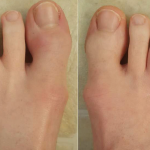 EULAR—Initial 24-week data from a study of patients with psoriatic arthritis (PsA) show that treatment with guselkumab improved symptoms and resulted in a higher ACR20 response than placebo in patients who could not tolerate, or did not respond to, treatment with a tumor necrosis factor inhibitor (TNFi).1
EULAR—Initial 24-week data from a study of patients with psoriatic arthritis (PsA) show that treatment with guselkumab improved symptoms and resulted in a higher ACR20 response than placebo in patients who could not tolerate, or did not respond to, treatment with a tumor necrosis factor inhibitor (TNFi).1
These findings, presented by Laura C. Coates, MBChB, MRCP, PhD, a researcher and clinician at the University of Oxford, Nuffield Department of Orthopaedics, Rheumatology and Musculoskeletal Sciences, England, during EULAR’s 2021 virtual European Congress of Rheumatology, June 2–5, were the findings of the first part of the COSMOS trial (NCT03796858).2 This phase 3b clinical trial included two parts: 1) a 24-week, double-blind, placebo-controlled period to analyze the efficacy and safety of guselkumab compared with placebo; and 2) a 32-week, active-treatment and safety follow-up for additional analysis of guselkumab’s efficacy and safety. The study’s total duration was 56 weeks.
Guselkumab is a human monoclonal antibody that specifically binds to the p19 subunit of interleukin (IL) 23, inhibiting IL-23, the cytokine-induced release of pro-inflammatory cytokines and chemokines to improve psoriasis and PsA.3,4
Methods
Patients with active PsA (n=285), who had demonstrated a lack of benefit or were intolerant to one or two TNFi’s, were randomized in a 2:1 ratio to receive either 100 mg of subcutaneous guselkumab (n=189) or placebo (n=96) at weeks 0 and 4, and then every eight weeks through week 44. (Note: In this study, active PsA was defined as having at least three swollen and tender joints.)
Patients who were treated with placebo could cross over into the guselkumab-treatment group at week 24. Additionally at week 16, patients in the placebo group who experienced a less than a 5% improvement in both tender and swollen joint counts met the study’s early escape criteria and could switch to the guselkumab-treatment group.
The primary efficacy end point at week 24 was an ACR 20 response, which includes:
- An improvement of 20% in the number of tender and swollen joints; and
- A 20% improvement in three of the following five criteria:
- Patient global assessment of disease activity;
- Physician global assessment of disease activity;
- Patient assessment of pain using a visual analog scale;
- Patient’s assessment of physical function; and
- C-reactive protein.
Patients were considered non-responders if the ACR20 data was missing at week 24 or if they met the study’s early escape criteria at week 16. Additionally, a subgroup analysis was completed to assess consistency of the primary treatment effect based on demographics, disease characteristics and medication use at baseline. Adverse events were evaluated by treatment type.
Results
Patients had similar baseline demographics. However, more women in the study received guselkumab than placebo (54% vs. 46%). At baseline, patients who received guselkumab had more severe joint symptoms, such as pain and more swollen/tender joints, as well as higher HAQ-DI and Physician Global Disease scores, compared with patients in the placebo group.
At week 24, 44% of patients treated with guselkumab experienced an ACR20 response compared with 19.8% of patients treated with placebo. At all the time points measured, the ACR20 response was higher in patients who received guselkumab than those who received placebo, as well as statistically significant (P<0.001).
For all major secondary end points, treatment with guselkumab was superior to treatment with placebo, but the statistical significance was not reported. At week 24, the secondary end points included:
- A change from baseline in the Health Assessment Questionnaire-Disability Index score;
- The percentage of participants who achieved an ACR50 response; and
- The change from baseline in 36-Item Short form Health Survey Physical Component Summary score.
For patients who discontinued prior TNFi use due to lack of benefit, guselkumab was an effective in treatment. Adverse events were similar between both treatment groups and included infections and injection-site reactions.
This study showed that taking 100 mg of subcutaneous guselkumab every eight weeks in patients with PsA for whom at least one TNFi was not tolerated or had not elicited a response had a durable and consistently higher ACR20 compared with patients who received placebo. Additionally, these patients had a favorable safety profile with guselkumab treatment.
Michele B. Kaufman, PharmD, BCGP, is a freelance medical writer based in New York City and a pharmacist at New York Presbyterian Lower Manhattan Hospital.
References
- Coates LC, Gossec L Thender E et al. Efficacy and safety of guselkumab in patients with active psoriatic arthritis who demonstrated inadequate response to tumor necrosis factor inhibition: Week 24 results of a phase 3b, randomize, controlled study [abstract OP0230]. Ann Rheum Dis. 2021;80(suppl 1):140–141.
- Janssen Pharmaceutica N.V. A study of guselkumab in participants with active psoriatic arthritis and an inadequate response to anti-tumor necrosis factor alpha therapy (COSMOS). ClinicalTrials.gov. 2021 Jan 20.
- Guselkumab label. U.S. Food & Drug Administration. 2017 Jul 13.
- Mease PJ, Rahman P, Gottlieb AB, et al. Guselkumab in biologic-naive patients with active psoriatic arthritis (DISCOVER-2): A double-blind, randomised, placebo-controlled phase 3 trial. Lancet. 2020 Apr 4;395(10230):1126–1136.

